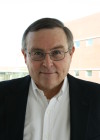HOME | ABOUT US | MEDIA KIT | CONTACT US | INQUIRE
HOME | ABOUT US | MEDIA KIT | CONTACT US | INQUIRE

The workplace of today is in a state of dynamic change that requires employees who are flexible and can adapt to the future. Recent statistics on career change show that we are now living in a work culture that experiences more frequent job changes than previous generations experienced. These statistics suggest that, on average, people entering the work force today will make a career change approximately five to seven times during their working lives. With the rapid rate of change and the advancement of technology, there is an ever-growing need for career-minded professionals to upgrade their skill sets and “retool” themselves to advance their careers.
In its simplest form, a professional development plan provides a framework that identifies goals, resources, activities and learning opportunities for growth. It also identifies milestones in terms of completion of goals and objectives that help you assess progress toward your desired outcomes.
Here are some suggestions on how to begin the process of creating a development plan. First, start with self-reflection. Ask yourself a series of questions: What are my current areas of expertise? What are my professional interests? What areas of my profession do I enjoy. What do I want my future career to be?
Second, conduct a personal needs assessment that addresses the following questions. What are my professional strengths? What are my professional areas for improvement? What external factors or trends are affecting or will affect my career? What new expertise and skills will be required or desirable?
Third, determine action steps that align with your goals and objectives. There are usually three types of goals in terms of time horizon. Short-term goals are ones that are critical to the immediate, day-to-day, present situation and usually are less than one year in length. Mid-range goals are important for identifying growth opportunities within the present situation and have a two-year range. Long-term goals are helpful for achieving career goals that range from three to five years and beyond.
Next, identify opportunities for growth. This involves creating a learning plan that identifies both formal and informal learning opportunities for developing new skills and expertise. These opportunities might include formal continuing education in the form of academic coursework or enrollment in professional certificate programs. There are informal growth opportunities as well that include attending lectures, seminars and webinars, and joining professional associations. Some employers may offer tuition assistance and/or paid time off to pursue learning opportunities.
Another approach is to take advantage of free online learning opportunities provided by Massive Open Online Courses (MOOCs) such as Coursera.org and edX.org. Lynda.com is another great source for keeping up with technology skills. Lynda.com is owned by LinkedIn and provides certificates of completion that can be added to one’s LinkedIn page. Creating a résumé profile on LinkedIn has become essential for professional job seekers. LinkedIn is one of the best tools for promoting your personal brand and connecting with other professionals online. Other social media tools like Twitter and Facebook are great for developing a professional learning network that can be used to connect to additional learning resources.
We live in a time of constant change. The only certainty is that new challenges and opportunities will emerge that are unimaginable. How can we know what skills will be required to succeed? In his book Five Minds for the Future, Howard Gardner, a professor of cognition and education at Harvard University, describes five mindsets that are essential to cope with a complex world that is going through a period of seismic change. These mindsets are needed to succeed in the future both personally and professionally. The “five minds” are:
• The disciplined mind, to have mastery of an area of expertise such as art,
history, science or mathematics. This level of mastery takes 10 years to develop.
• The synthesizing mind, to have the ability to objectively evaluate and organize information from a variety of sources and communicate it effectively to others.
• The creating mind, to build on dis-
cipline and synthesis to generate new ideas, questions and innovative solutions to problems.
• The respectful mind, to appreciate and understand the differences between cultures and human individuals in order to work effectively with others.
• The ethical mind, to contemplate the nature of one’s work and considers one’s responsibilities beyond self-interest as both a worker and a member of society.
With a well-rounded perspective on the evolution of a specific professional atmosphere, and a concrete plan, professional advancement becomes more of a tangible reality than a fleeting aspiration. In a 2014 study, Gail Matthews of Dominican University in California found that those with written goals are 42 percent more likely to achieve them than those with unwritten goals. A professional development plan helps not only to hold us more accountable to our goals, but also to map out the path to reaching them.